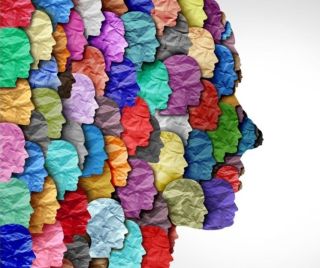Personality
Redefining Personality Theory in the Light of Modern Physics
Physics tells us the best version of ourselves exists, and we can get there.
Posted February 29, 2024 Reviewed by Ray Parker
Key points
- The modern, scientific view of time challenges our traditional understanding.
- Our best self exists in the universe's infinite possibilities; we don't have to create it, just find it.
- Our best self is our enlightened self.
- We can use a metaphor to understand our existence in this new view of time: the novel "The Midnight Library."
Time is the soil from which personality grows. To grasp the essence of personality, we must delve into the nature of time. Modern physics reveals a concept of time so starkly different from traditional views that it necessitates an updated theory of who we are and our place in the cosmos. This blending of physics and psychology promises a clearer path to healing and self-optimization. Let's explore how the evolving scientific view of time leads to an enlightened understanding of ourselves.
A Brief History of the Concept of Time
In 1926, Albert Einstein challenged our conventional understanding of time, stating, "The separation between past, present, and future is only an illusion, although a convincing one." [i] This radical proposition—that the past, present, and future coexist—has ignited ongoing debates in physics. With the accumulation of experimental evidence and theoretical frameworks, it has become evident that our common perception of time is fundamentally flawed. Science suggests that our brains and minds attribute qualities to our experience of time that do not inherently exist.
Beginning around 1928, the role of the observer in quantum mechanics gained prominence after the Copenhagen interpretation emerged from a series of discussions and conferences aimed at making sense of the perplexing experimental data. This interpretation posits that a particle exists in all possible states simultaneously until it is observed, at which point the wave function collapses to a single possibility.
However, the Copenhagen interpretation led to several paradoxes, such as the Schrödinger's cat thought experiment, which results in a cat that is simultaneously dead and alive until observed. These paradoxes prompted theorists to propose new theories to resolve these issues, significantly impacting the understanding of time in physics.
To address some of the paradoxes inherent in quantum mechanics, the many worlds Interpretation (MWI) of quantum mechanics, initially proposed by physicist Hugh Everett in 1957, has been developed. This interpretation has gradually gained acceptance among a growing number of theoretical physicists. Essentially, MWI suggests that all possible quantum outcomes actually occur, each manifesting in its own distinct universe. Wikipedia explains: "MWI. . . implies that all possible outcomes of quantum measurements are physically realized in some 'world' or universe. . . [It] implies that there are most likely an uncountably infinite number of universes. . . MWI views time as a many-branched tree. . ." [ii]
Completing our brief review of physics' evolving conception of time, we arrive at what can be considered to be the view of a significant percentage of current physicists, as summarized by Carlo Rovelli, a theoretical physicist, in his 2016 book Reality Is Not What It Seems:
“Change and time are illusions. The universe is a static, timeless ‘Platonia,’ filled with every possible Now, which we, as limited beings, perceive in a linear sequence.”[iii]
Such a concept of time challenges our limited perceptions. How can we conceptualize what science reveals about time in relation to our experience of the world and its implications for personality theory? Literature offers a unique lens through which we can begin to visualize and understand these complex ideas.
A Metaphor for Who and What We Are

Matt Haig's 2020 best-selling novel, The Midnight Library, which draws inspiration from the MWI's concept of time, serves as an illustrative example. By integrating the novel's portrayal of time—in which each individual possesses an infinite library of books, each representing a different life path they could choose—with Rovelli's concept of time, we arrive at an accessible metaphor.
In this metaphor, every book symbolizes a different trajectory your life could, and did, take based on past choices and those yet to be made, as well as all possible events. Choosing a new book signifies a quantum divergence, where one version of you embarks on the life detailed within its pages, while other versions explore alternative paths. And another version of you continues perusing the stacks of books, looking for what you're looking for. Despite our perception of time as linear, this metaphor suggests that all these alternate realities coexist simultaneously, akin to an extensive library housing every possible narrative of your life at once.
Viewing our lives from this timeless, changeless perspective suggests that each individual possesses their own unique, infinite library, exploring and having explored every potential version of their existence, including all possible pasts and futures. But here is where the scientific implications for personality theory get interesting.
Specifically, it prompts us to ponder the nature of the individual who navigates through this vast array of experiences. Who and what is that person with their unique infinite library of all their possible experiences? The simple answer to this question implies that each of us harbors a unique personality that spans all of its possible times and experiences. Our personalities are static and fixed, consistently with the same essence navigating through an infinite web of possibilities. However, this core personality accrues experiences, which, while not altering the personality itself, serve as a lens through which it views, perceives, and interacts with reality.
The Best Possible Version of Us Exists Now
What are the deeper implications of the idea that we are unique personalities living our lives moment to moment, linearly, yet from a broader perspective, have already experienced every possible experience? It implies that since an optimal version of ourselves is possible, it already exists. So, how can we envision this best possible version of ourselves?
I suggest that this ideal version is an enlightened one. As I have explored in previous posts, enlightenment is attainable and a verifiable state of body and mind. This outlook fosters optimism in personal development and personality theory, suggesting our enlightened selves—or the realization of our best selves—are not merely goals to achieve but pre-existing realities within the multiverse. The real task is aligning our current evolution with the path toward this optimal version, guided by our choices and actions.
Navigating Toward Our Best Possible Self
Integrating the modern concept of time from physics into personality theory invites us on a journey not to become something new but to aim toward the already existing, best version of ourselves. This viewpoint encourages us to reassess our approach to life. We aim to arrive at the enlightened existence we are already living—and have lived—in another dimension of reality.




